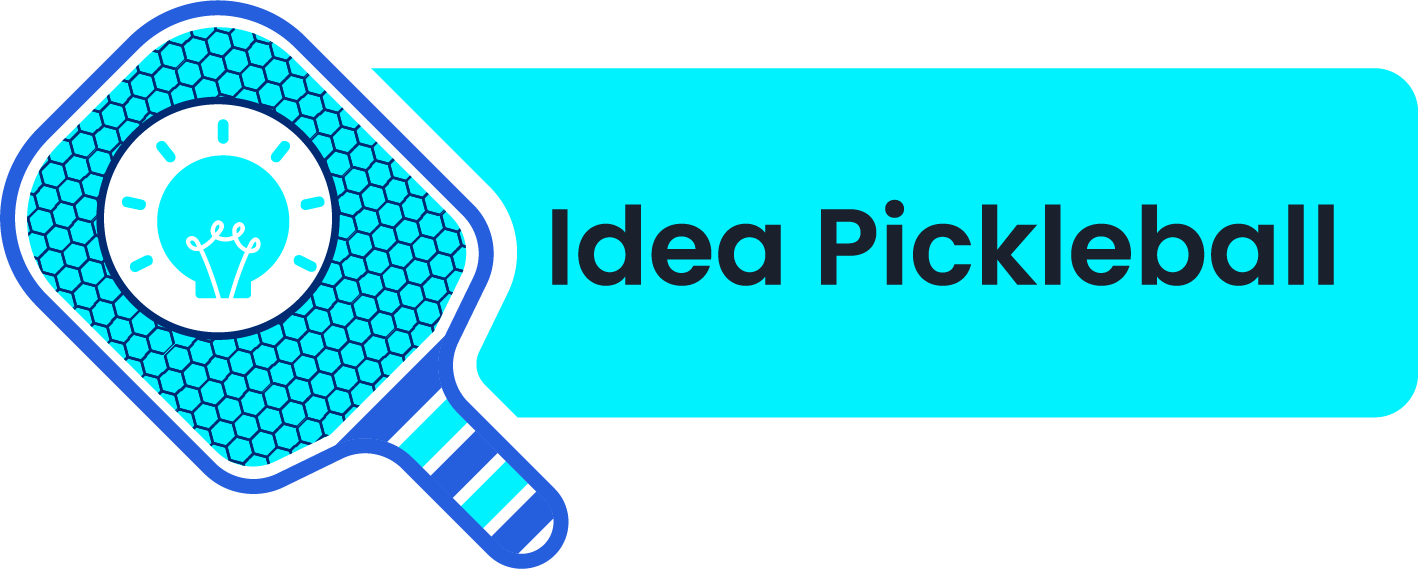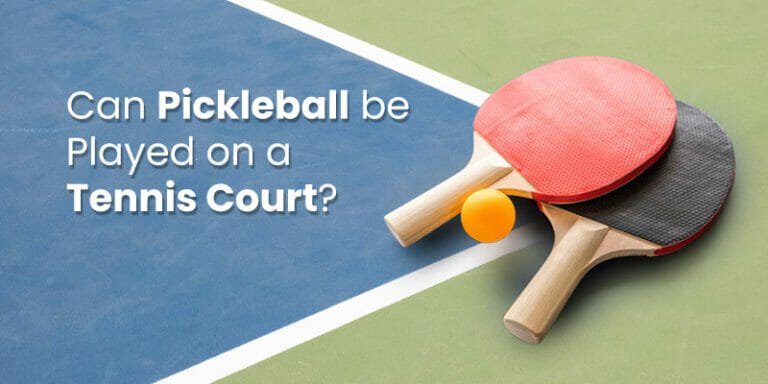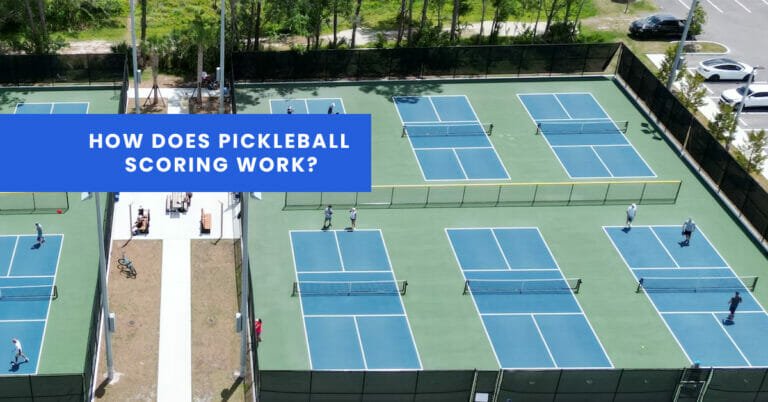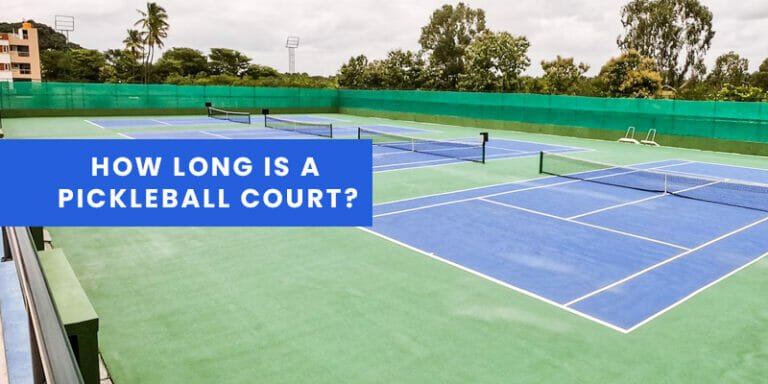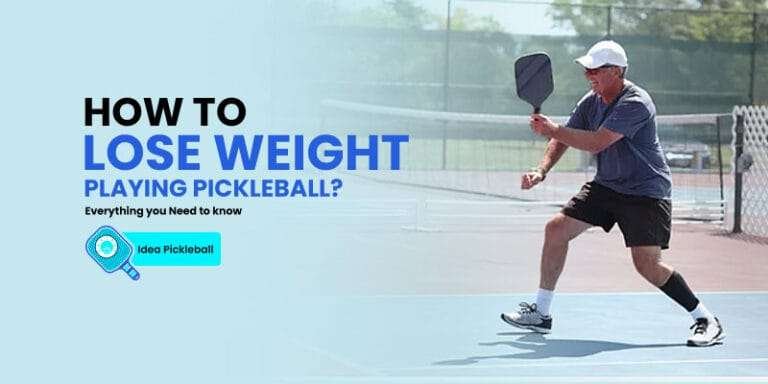Can You Bounce Serve in Pickleball?
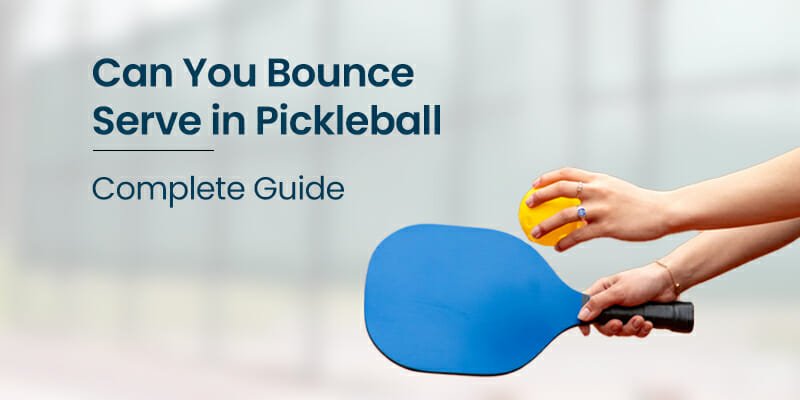
Pickleball enthusiasts, both new and seasoned, often find themselves pondering a captivating question: Can you bounce serve in pickleball? In this extensive guide, we will explore the ins and outs of this intriguing serving technique. We’ll begin by delving into the problem that players face, then present a solution that opens up new possibilities, and finally, we’ll invite you to discover the details that lie ahead.
Pickleball, with its unique blend of sports like tennis, badminton, and ping pong, has garnered a massive following. However, the sport’s traditional underhand serve has left many players wondering if there’s room for innovation. This quandary forms the foundation of our exploration – the quest to determine whether a bounce serve can find a place in the world of pickleball.
The answer to the question is an emphatic “yes.” Not only can you execute a bounce serve in pickleball, but it can also be a game-changing maneuver when utilized strategically. In the sections that follow, we will provide you with a comprehensive guide on how to use bounce serve in your everyday pickleball games.
How Can You Bounce Serve In Pickleball: Step-By-Step Guide
Step 1: Mastering the Fundamentals
Before diving into the intricacies of the bounce serve, it’s essential to build a solid foundation by mastering the fundamental aspects of pickleball serving. These core elements lay the groundwork for your overall serving technique and set the stage for a successful and effective serve.
1. Grip
The grip is the very first aspect to address when it comes to serving in pickleball. A proper grip ensures control, accuracy, and power in your serves. There are two primary grips to consider:
- Eastern Grip: In the Eastern grip, your paddle face aligns with the hitting surface of the ball. This grip provides a balanced mix of control and power, making it suitable for various serves.
- Continental Grip: The Continental grip is often favored for the serve. Here, the edge of the paddle is slightly angled downward. This grip allows for more wrist action, which can generate additional spin and power.
2. Stance
A balanced and stable stance is crucial for a successful serve. Consider the following elements:
- Feet Position: Stand with your feet shoulder-width apart for balance. Your non-dominant foot (left for right-handed players and vice versa) should be slightly ahead, pointing towards the net.
- Weight Distribution: Keep your weight evenly distributed on both feet to maintain balance during your serve.
3. Body Position
Your body’s positioning in relation to the court and net is vital for an effective serve:
- Side-On Stance: Face your non-volley zone and align your body sideways to the net. This stance enables a better range of motion and control.
- Lean Forward: Slightly lean forward at your waist to get closer to the net and prepare for a smooth follow-through.
4. Ball Placement
The placement of the ball on the paddle is crucial for accuracy and control:
- Positioning: Hold the ball slightly to the side and in front of your body, roughly at waist height. This allows you to strike the ball at the optimal point for your desired serve.
5. Swing Technique
A proper swing technique ensures consistency and effectiveness in your serves:
- Backswing: Initiate your swing by bringing the paddle back behind you. This motion prepares you for a fluid and controlled forward swing.
- Follow-Through: After making contact with the ball, follow through with your swing. The follow-through should be smooth and directed toward your target on the other side of the net.
6. Focus on Control
In this foundational phase, prioritize control over power. A controlled serve that lands consistently in the service box is often more valuable than a powerful yet erratic one.
Step 2: Understanding the Bounce Serve
The bounce serve is an unconventional yet highly effective serving technique in pickleball. To execute it successfully and utilize it to your advantage, you need to understand its underlying concept and the strategic considerations that come with it.
Concept of the Bounce Serve
The bounce serve in pickleball involves intentionally causing the ball to bounce once in the service court before you strike it towards the opponent’s side of the net. This bounce introduces an element of unpredictability, as your opponent must adjust to the bounce and position themselves accordingly. When executed effectively, the bounce serve can disrupt your opponent’s rhythm, create difficult returns, and give you a significant advantage in the rally.
Strategy Behind the Bounce Serve
To make the most of the bounce serve, you should consider the following strategic elements:
1. Timing and Placement: The key to a successful bounce serve is precise timing and placement. Aim to make the ball bounce just in front of the opponent’s non-volley zone (kitchen) while also ensuring it clears the net. This requires a delicate touch and careful calculation of the ball’s trajectory.
2. Variation: Like any effective serving technique, the bounce serve benefits from variation. Mix up the speed, angle, and spin of your bounce serves to keep your opponent guessing. By constantly changing your approach, you can maintain the element of surprise and make it challenging for your opponent to anticipate your serves.
3. Reading Your Opponent: Pay close attention to your opponent’s positioning and movement patterns. If they tend to stand closer to the net or favor a specific corner of the court, use this information to your advantage. Direct your bounce serves to exploit their weaknesses or force them into unfavorable positions.
4. Psychological Advantage: The bounce serve can be mentally challenging for your opponent. The unexpected bounce can cause momentary hesitation or indecision, giving you a psychological edge. Capitalize on this by staying confident and composed during the rally.
When to Use the Bounce Serve
The timing of when to employ the bounce serve depends on various factors:
1. Opponent’s Skill Level: Consider your opponent’s skill level. If you’re facing a less experienced player, the bounce serve can be particularly effective in creating confusion and errors.
2. Game Situation: The bounce serve can be a game-changer in critical moments, such as when you need to break your opponent’s serve or gain momentum. However, avoid overusing it, as predictability can work against you.
3. Surprise Element: Utilize the bounce serve when you sense that your opponent has become accustomed to your standard serves. The element of surprise can catch them off guard and lead to unforced errors.
4. Adaptation: Be prepared to adapt your serving strategy based on your opponent’s response. If they handle the bounce serve well, consider switching back to traditional serves or other variations.
Step 3: Perfecting the Bounce
Achieving the perfect bounce in your pickleball serve is essential for its effectiveness. A well-executed bounce serve can catch your opponent off guard, disrupt their rhythm, and lead to advantageous rallies. To master this technique, you need to understand the mechanics and execution involved in creating the ideal bounce. In this section, we’ll guide you through the technical aspects of the bounce serve to help you perfect it.
1. Ball Placement
- Precise Ball Position: Start with the ball held slightly in front of your body at waist height. The ball should be positioned on the paddle so that it’s ready for a gentle upward tap. Ensure you have control over the ball’s placement.
2. Swing Technique
- Gentle Tap: The key to the bounce serve is a delicate and controlled motion. Use a soft, gentle tap of the paddle to make contact with the ball. It’s not about power; it’s about finesse.
- Upward Swing: Focus on an upward swing as you strike the ball. The goal is to create a slight elevation in the ball’s trajectory, just enough for it to clear the net and land in the service court.
3. Angle of Contact
- Low Angle: Keep the angle of contact between your paddle face and the ball relatively low. This ensures that the ball doesn’t soar too high and gives it the opportunity to bounce just before the opponent’s non-volley zone.
4. Timing
- Timing is Crucial: Timing is everything in the bounce serve. The ball should be struck at precisely the right moment in its descent to create the desired bounce. This timing takes practice to perfect.
5. Spin Control
- Limited Spin: Unlike other serves that rely on spin (e.g., topspin or backspin), the bounce serve doesn’t require extensive spin control. Instead, the focus is on a clean and precise tap with minimal spin.
6. Target Placement
- The Ideal Landing Spot: Aim for the ball to land just in front of the opponent’s non-volley zone (kitchen) line. This positioning forces your opponent to make quick decisions and may result in mistakes.
7. Consistency
- Practice for Consistency: Consistency is key in the bounce serve. Repetition and practice are essential to ensure that you can consistently produce the desired bounce with accuracy.
8. Adaptability
- Adjust to Court Conditions: Be adaptable to court conditions. Factors like wind, humidity, and court surface can affect the bounce of the ball. Adjust your serve accordingly during play.
9. Variety
- Keep Opponents Guessing: Incorporate variety into your bounce serves. Change up the placement, speed, and angle to prevent your opponent from anticipating your serves effectively.
10. Mental Composure
- Stay Calm and Confident: The bounce serve, like any other technique, requires mental composure. Stay calm and confident when attempting it, especially in high-pressure situations.
Step 4: Strategic Application
Now that you’ve honed your skills in executing the bounce serve effectively, it’s time to elevate your game by understanding how to strategically deploy this unique serve in various game situations. The bounce serve, with its element of surprise and unpredictability, can be a powerful tool to outsmart your opponents. Here’s how to strategically apply the bounce serve to gain a tactical advantage on the pickleball court.
1. Game Situation
a. Breakpoint Opportunities:
- Use the bounce serve when you have a chance to break your opponent’s serve. The surprise element can catch them off guard, making it difficult for them to respond effectively.
b. Momentum Shifts:
- Deploy the bounce serve when you need to shift the momentum in your favor. A well-timed bounce serve can disrupt your opponent’s rhythm and confidence.
c. Crucial Points:
- In critical points of the game, such as match point or when the score is tied, the bounce serve can apply added pressure to your opponent, potentially leading to errors.
2. Opponent’s Weaknesses
a. Target Their Backhand:
- If your opponent has a weaker backhand, strategically place your bounce serves to exploit this vulnerability. Force them to return with their weaker side.
b. Mobility Issues:
- If your opponent struggles with lateral movement, use the bounce serve to make them move quickly and create opportunities for you to exploit gaps in their court coverage.
3. Court Conditions
a. Wind:
- Consider the wind direction and intensity. The bounce serve can be especially effective when serving against the wind, as it can create additional unpredictability in the ball’s trajectory.
b. Court Surface:
- Be aware of the court surface. Different surfaces can affect how the ball bounces. Adjust your bounce serve based on the characteristics of the court.
4. Mix with Other Serves
a. Variety:
- Incorporate the bounce serve as part of your serving repertoire. Combine it with other serves, such as topspin and backspin, to keep your opponents guessing.
b. Change of Pace:
- Use the bounce serve strategically as a change of pace. Alternating between traditional serves and the bounce serve can disrupt your opponent’s anticipation.
5. Psychological Advantage
a. Mental Pressure:
- Recognize the psychological impact of the bounce serve. The unexpected bounce can create mental pressure on your opponent, potentially leading to mistakes.
b. Stay Confident:
- Maintain confidence in your bounce serve. Your own belief in its effectiveness can be a significant psychological advantage.
6. Adaptability
a. Read Your Opponent:
- Continuously assess your opponent’s reactions to your bounce serves. If they struggle to handle them, continue using this strategy.
b. Adjust to Their Adaptation:
- If your opponent starts to adapt and return your bounce serves effectively, be prepared to adjust your strategy. Switch back to traditional serves or explore new variations.
Step 5: Practice, Practice, Practice
As with any skill in pickleball, practice is essential for mastering the bounce serve. To develop consistency, accuracy, and control, incorporate the following drills and exercises into your training regimen. These drills will help you refine your technique and gain confidence in deploying the bounce serve effectively in real-game situations.
1. Target Practice
Objective: Improve your accuracy and precision in ball placement.
Setup:
- Place targets in the opponent’s service area, aiming for different spots (e.g., corners, centerline).
- Start with larger targets and gradually decrease their size as your accuracy improves.
Execution:
- Begin by serving with the intention of hitting the targets.
- Focus on clean and controlled taps, ensuring the ball lands within the designated targets.
- Gradually increase the difficulty by using smaller targets and varying the placement.
Variations:
- Challenge yourself by setting up multiple targets and hitting them consecutively.
- Simulate real-game scenarios by placing targets strategically to exploit your opponent’s weaknesses.
2. Bounce Height Control
Objective: Gain better control over the bounce height of your serves.
Setup:
- Stand at the baseline with a target area in the opponent’s service court.
- Use a hula hoop or a similar object to designate the desired bounce height.
Execution:
- Serve the ball with the goal of making it bounce within the hula hoop’s boundary.
- Experiment with different levels of bounce, from a low and barely clearing the net to a slightly higher bounce.
Variations:
- Increase the challenge by setting varying bounce height goals and practicing to hit each one consistently.
3. Change-Up Drill
Objective: Develop the ability to switch between different serves, including the bounce serve, to keep your opponent guessing.
Setup:
- Stand at the baseline with a practice partner or against a wall.
- Prepare different balls for different serves, including standard serves and bounce serves.
Execution:
- Serve a series of balls, alternating between standard and bounce serves.
- Vary the placement and speed of each serve.
- Challenge your partner to anticipate and respond to each serve correctly.
Variations:
- Gradually increase the pace of the drill to mimic real-game situations where you need to make quick decisions about your serve.
4. Pressure Situations
Objective: Simulate high-pressure scenarios to build mental resilience.
Setup:
- Create a practice match scenario with a partner or opponent.
- Set a specific game situation (e.g., match point, tie-breaker) to create pressure.
Execution:
- Serve under the pressure of the designated game scenario, focusing on delivering an accurate and effective bounce serve.
- Keep track of your performance and learn to manage the mental aspect of serving under pressure.
Variations:
- Adjust the pressure scenarios to match different game situations, helping you prepare for various critical moments in a match.
5. Competitive Games
Objective: Test your bounce serve in competitive settings.
Setup:
- Engage in practice matches or friendly games with opponents of varying skill levels.
- Use your bounce serve strategically during these games.
Execution:
- Apply what you’ve practiced in real-game situations, using the bounce serve when it’s strategically advantageous.
- Take note of your success and areas for improvement in using the bounce serve during live matches.
Variations:
- Play against different opponents to adapt to various playing styles and strategies.
Remember that consistent practice is key to mastering the bounce serve. Regularly integrate these drills into your training routine to refine your technique, build confidence, and ultimately add a valuable weapon to your pickleball arsenal.
Conclusion
In conclusion, the bounce serve in pickleball is not only possible but also a valuable tool for players looking to diversify their strategies. This comprehensive guide has provided you with the knowledge and techniques needed to incorporate the bounce serve into your game. Embrace this exciting approach, practice diligently, and elevate your pickleball experience to new heights.
check out the Top 5 Best Affordable Pickleball Paddles in 2023
FAQs: Your Burning Questions Answered
Q1: Is the bounce serve allowed in pickleball tournaments? A1: Yes, the bounce serve is permitted in pickleball tournaments, provided it adheres to the established rules and regulations for serving.
Q2: What is the ideal bounce height for an effective serve? A2: The ideal bounce height for a bounce serve typically ranges from 2 to 3 feet, although it can vary depending on your strategy and court conditions.
Q3: Are there specific paddle and ball recommendations for executing a bounce serve? A3: While there are no strict requirements, some players prefer paddles with certain characteristics and balls with consistent bounce for executing a successful bounce serve.
Q4: Is the bounce serve more effective in singles or doubles play? A4: The bounce serve can be effective in both singles and doubles play, depending on your skill level and how well you can adapt your strategy to the game format.
Q5: How can I practice my bounce serve to improve accuracy and consistency? A5: To enhance your bounce serve, engage in regular practice sessions, focus on control, spin, and placement, and consider practicing with a partner or against a wall for added efficiency.
